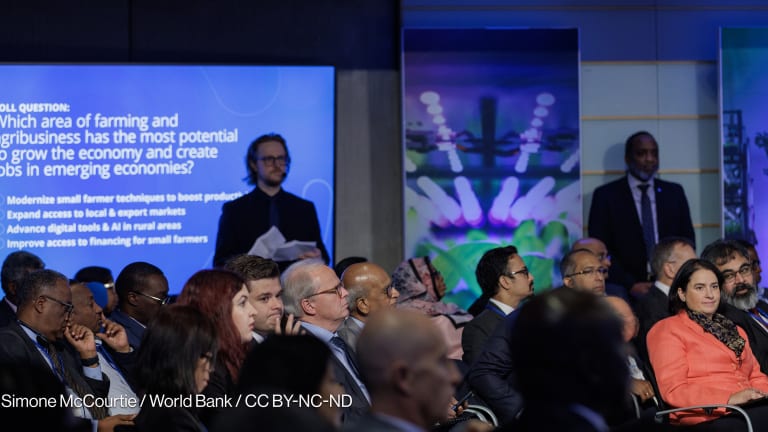
Inequality in all its forms continually crops up in conversations on what the post-2015 development agenda should look like. It’s also a theme that has emerged from the United Nation’s first wave of consultations.
But the World Bank has recently come under fire for placing too much focus on economic growth in its anti-poverty paradigm, without addressing income inequality. The omission came to light in leaked strategy documents, entitled ”A Common Vision for the World Bank Group,” which defines how the bank would conduct its development work until 2030.
If the strategy is approved, the World Bank wants to reduce the number of people living in extreme poverty to 3 percent by 2030 and doing so would require increasing income growth of the bottom 40 percent of the population in every country.
“The overarching mission of the World Bank Group is a world free of poverty,” the strategy noted. “In using income or consumption to measure progress toward these goals, we will not to ignore the multiple dimensions of welfare.”
The strategy, according to critics, is silent on the complex relationship between poverty and inequality.
Didier Jacobs, acting head of Oxfam’s Washington, D.C., office, said increased income is not exactly a goal, but an activity.
“The World Bank must commit to growing the bottom 40 percent faster than the average, and reducing disparities between the top and bottom of society,” said Jacobs in a statement.
With this strategy, the World Bank seems to be conducting a “business-as-usual approach,” David Woodward of the London-based think tank New Economics Foundation, said in a press statement.
But the World Bank has a different take on the issue.
“The choice of the shared prosperity indicator underscores the importance of economic growth in the development agenda and, in particular, growth that is inclusive of the poorer segment of society,” it said.
Last week week, a group of economists and development experts appealed to address the problem of inequality in the post-2015 framework.
“Inequalities threaten our ability to pursue fair and sustainable development as much as they threaten the eradication of extreme poverty,” the group said in a joint statement. “Research shows that inequality — both within and between countries — is a barrier to individual development and sustained economic growth.”
They suggested that the inequality target should be based on the income share ratio of the top 10 percent of a population and the bottom 40 percent. The ratio shows whether the top 10 percent receives a larger share of the national income than the bottom 40 percent.
This indicator has also been suggested by Alex Cobham, a research fellow at the Center for Global Development Europe office. In a March 15 paper, Cobham noted that countries reducing the ratio compared to countries increasing the ratio are three times higher in reducing incidences of one dollar-per-day poverty and hunger.
Read more development aid news online, and subscribe to The Development Newswire to receive top international development headlines from the world’s leading donors, news sources and opinion leaders — emailed to you FREE every business day.








